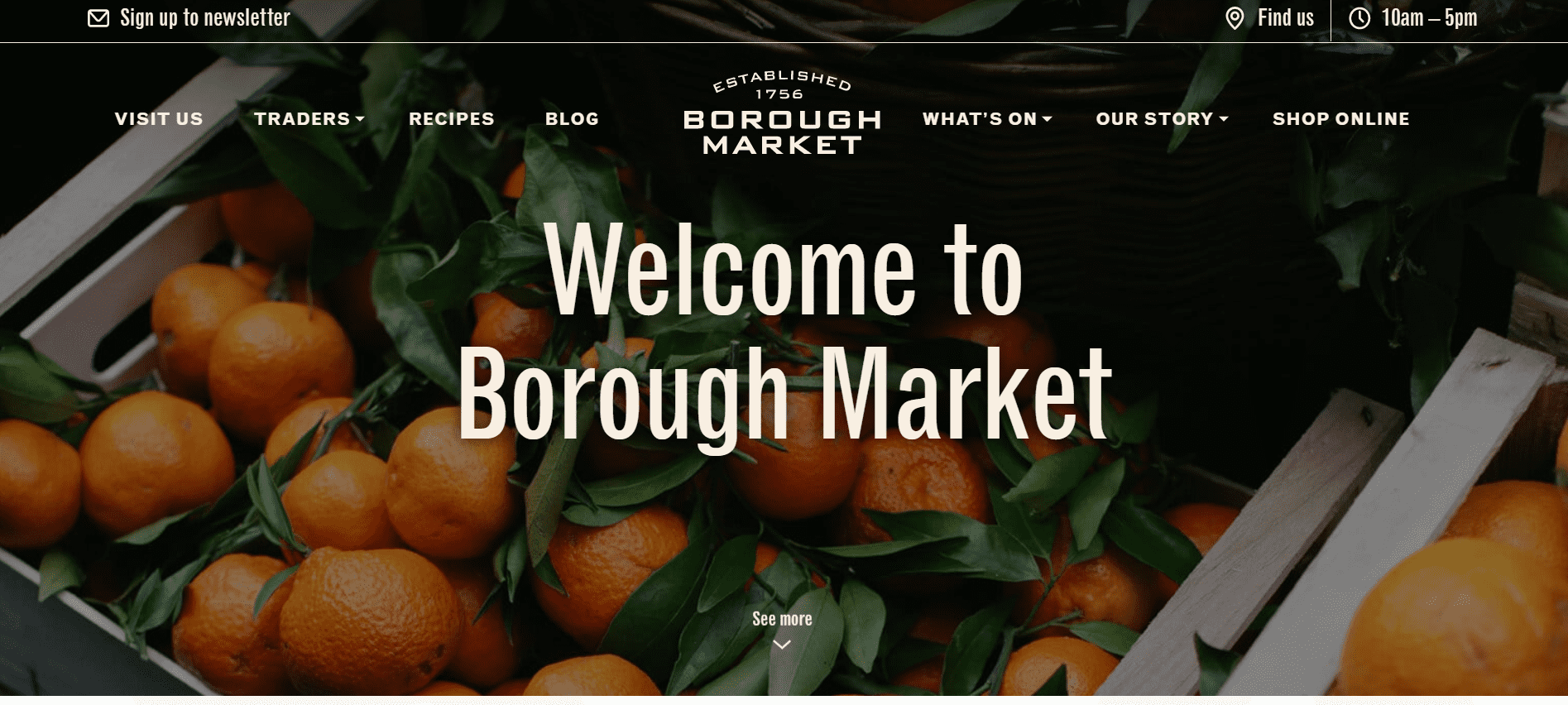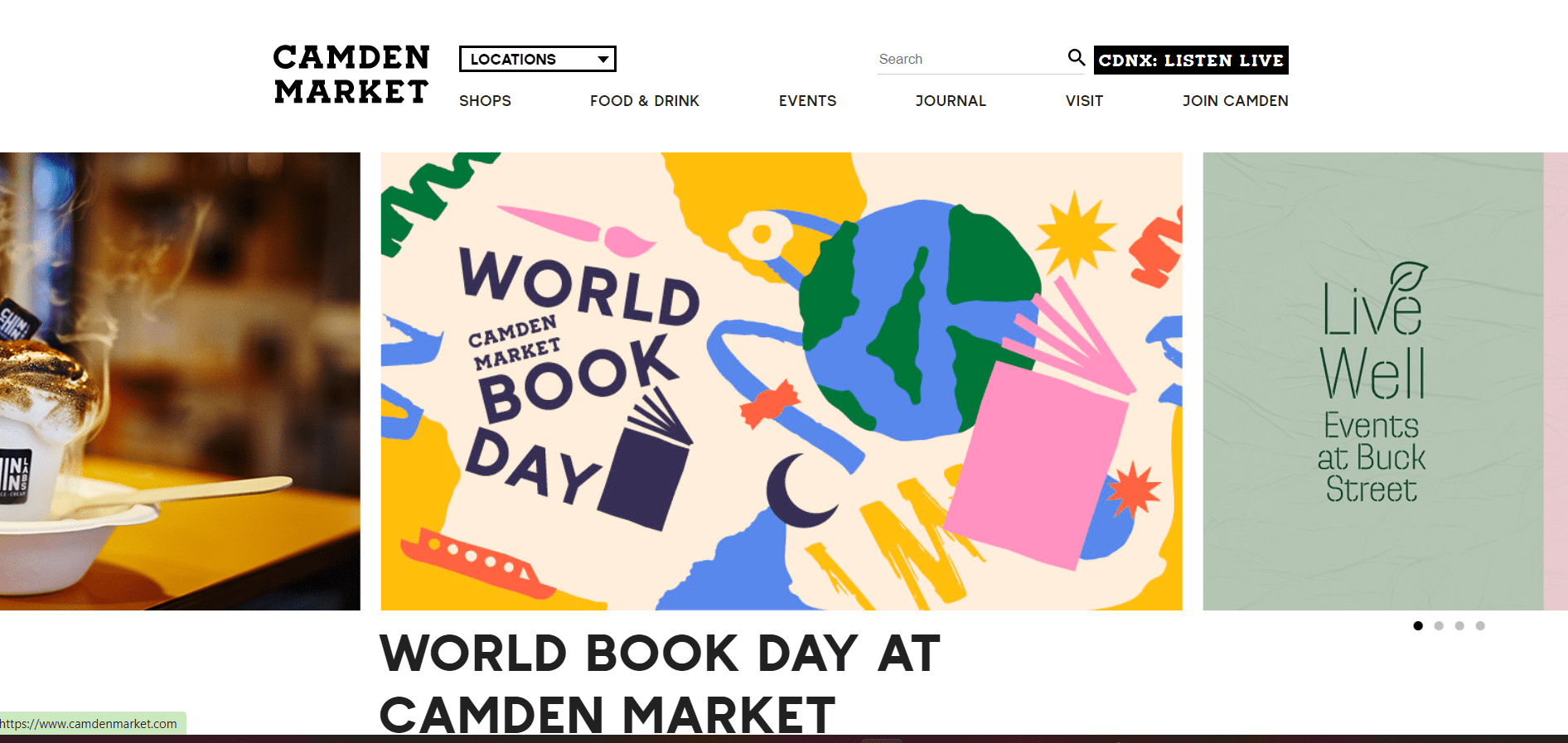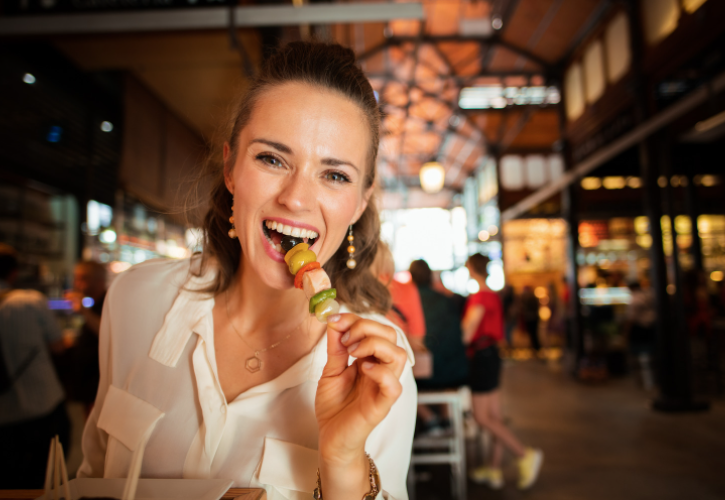Consider some of London’s most popular food markets as outdoor markets return. The street food scene is thriving from Borough to Brockley, via Camden and King’s Cross. No matter the season, street food is perfect. A short lunch or after-work appetizer is perfectly suited for the laid-back vibes, no matter whether you’re outside or not.
Since London’s streets, the food industry is growing stronger every year, and with outdoor markets reopening, it’s the perfect moment to rediscover your inner zeal and explore the street food scene. You can find old favorites and two new additions to the city’s street food scene.
Top 10 Food Markets in London
1. Borough Market

The Borough Market is a wholesale and retail market hall in London’s Borough of Southwark. Borough Market, which specialises in food, is actually three markets in one (with several bars, restaurants, and shops dotted throughout it).
Compared to Green Market, Three Crown Square has a greater concentration of larger producers and merchants. Here you can get cheese, wine, pastries, and even produce. The Borough Market Kitchen is a place where street food vendors can sell their products. Every day, the roughly 1,000-year-old market holds cooking demonstrations and classes.
2. Mercato Metropolitano

Mercato Metropolitano is London’s very first sustainable community market. They place an emphasis on quality food. The organization supplies and supports local start-ups to revive urban neighborhoods that have been abandoned.
A major part of the Mercato Metropolitano’s mission is to collaborate with social entrepreneurs who share their commitment to sustainability, quality, traceability, and ethical production. First sustainable and inclusive market in London, offering not only nutritious food from carefully sourced ingredients, but also a full calendar of events focused on food education, the arts, and social responsibility.
3. Broadway Market

Broadway Market is a foodie’s dream, with a plethora of the city’s best suppliers of excellent fare. You can sample fresh produce, pastries, cheeses, and accouterments while enjoying the market’s traditional atmosphere.
This is the market to go to if you like your markets to be civilized and if you’re a foodie. You can also expect to see foodies, creative people, and fashionable families picking up delicacies for cooking at home or snacking on the go.
4. Greenwich Market

The Greenwich Market may look familiar because Lord Sugar’s henchmen trolled its stalls for oddities like skeletons and ancient coins for ‘The Apprentice’s’ purchasing task.
The old south London market specializes in antiques and arts and crafts. But a leisurely stroll around this eighteenth-century market – London’s only one set in a World Heritage Site – is well worth the trip. You won’t have to worry about hunger limiting your haggling skill at Greenwich Market since there is a lot to see and do. On any given day, there are 40 food stalls offering street snacks, sweets, and handcrafted sandwiches.
5. Tooting Market

There are hundreds of products available at Tooting Market, from fresh foods to fashion to music, from hair salons to furniture, and you can find just about anything there.
In and of itself, the market’s ambiance and overall attitude are exhilarating and stimulating.
6. Market Hall Fulham

Located in the middle of Fulham Broadway, Market Hall Fulham is an excellent new destination. Edwardian Underground stations are buildings with a century-old history.
Authorities have developed it into an impressive food and drink destination. In addition to being an exciting place to eat, drink, and do, Market Hall Fulham is a community hub.
There are ten stalls at the Market Hall Fulham, serving anything from coffee to BBQ. A total of three hawker centers are planned for London, all of which will be influenced by Asian culture. It is expected to become one of London’s biggest street food markets and food halls.
7. Camden Market

Camden Market can be found north of Hampstead Road Lock (popularly referred to as Camden Lock) on the Regent’s Canal. A weekly average of 250,000 people visit it, making it London’s fourth most popular visitor destination.
Vintage clothing, handmade jewelry like silver necklace, quirky gifts, and eye-catching accessories can be found at Camden Market. The stalls sell crafts, apparel, bric-a-brac, and food. Begin the day with breakfast at The Basement Tea Room, followed by a visit to St Cyr Vintage to find vintage clothing.
If you’re looking for a delicious sandwich, check out Yorkshire Burrito and Baba G’s Bhangra Burger. You can pick up vinyl from one of the market’s music vendors or try out some Half Hitch gin, made by the local microdistillery, in the afternoon. End the day by visiting Powerhaus, Camden Town’s iconic live music venue and formerly Dingwalls.
8. Pop Brixton

Pop Brixton is a pop-up concept that has transformed unused land for creative businesses into a small hub. The Pop Brixton area is a unique and immersive tourist attraction with over 50 shops ranging from street food to restaurants, pubs, retail boutiques, to a radio station.
Within walking distance of Brixton Tube Station, Pop Brixton offers a range of options for private hire as well as food to suit all tastes. Experience the most exciting pop-up experience in South London, whether you are hosting your own event, treating your employees, launching your latest product, or entertaining family and friends.
9. Portobello Road Market

The Portobello Road market in Notting Hill, west London, is the perfect place for treasure hunters. Portobello Market was one of London’s oldest marketplaces dating to the 19th century.
This was the location of the film Notting Hill, starring Hugh Grant and Julia Roberts in 1999. In the past, celebrities like Meghan Markle and Elton John have frequented the market.
Saturday is the market’s busiest day when over 1,500 stalls compete for your attention. The market is known for its antique stalls. In addition to antique clothing, jewelry, street cuisine, and artwork, there are other stalls at the market.
10. Maltby Street Market

Since its opening in 2010, Maltby Street Market has become an essential part of downtown Maltby. An odd, southeast London neighborhood quickly gained popularity as a weekend getaway.
In the eighteenth century, a ropewalk named Ropewalk was owned by noted Bermondsey eccentric Robert Rich and was on John Roques’ 1746 map. 1836 marked the end of the construction of the London to Greenwich railway, which caused the area to be interrupted. Now, the 40,000,000-brick bridge that once held the railway houses the Maltby Street Market.
And a host of other food and beverage shops in Bermondsey. The Maltby Street Market has been fully subscribed since its founding. Besides its small size, the railroad arches and decorations have a scenic character that stimulates the market and allows new businesses and star dealers to arrive at the site.









